
The Formula One World Championship series will have a few new rules for the 2014 season. When the checkered flag dropped at the end of the 2013 season, it marked the end of an era of V8 power in Formula One. Formula One Research and Development teams have committed more time and resources and are working flat out to meet the specifications of the new generation of V6 turbocharged, direct injection engines that are now the future of F1. These cars look different and are equipped with powertrains that are radically different than those of the last few years. Gone is the fierce mechanical squeal of the V8 engines from previous seasons, which has been replaced by a softer, lower-pitched hum of the turbocharged V6s.
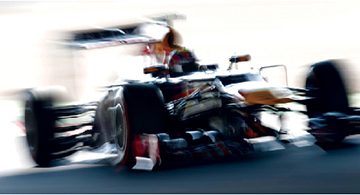
Engine
There have been significant changes made to engine and chassis regulations for 2014. The rules required for engines for the 2014 models all together amount to possibly the biggest shake-up in technical rules in two decades. V8 power, used since 2006, has been replaced in 2014 by a new 90-degree, 1.6-liter, V6 turbocharged engine with direct injection and an integral use of energy recovery. 2014 also sees the return of the turbocharger for the first time since 1988. The new F1 engines, now called powertrains, have a design emphasis that features the importance of energy recovery. The concept is to bring F1 into line with cutting-edge, road-car technology and to stimulate research and development in that area. The Kinetic Energy Recovery System (KERS) will be incorporated into the design of the engine. The new power units will use two Motor Generator Units (MGUs), which are effectively electrical machines. When operating as a motor, the MGU converts electrical energy to mechanical energy. When it operates as a generator, it converts mechanical energy to electrical energy.
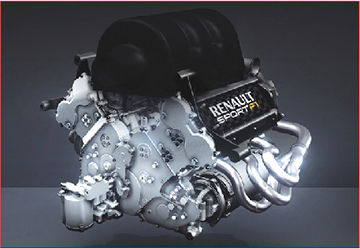
Turbocharged engines return for the first time since 1988 as the V8 engines are replaced by a 1.6 liter V6 with an eight-speed semi-automatic gearbox.
There are two MGUs in the vehicle; the first is the Motor Generator Unit - Kinetic (MGU-K). This unit is designed to recover kinetic energy from braking. The second is the Motor Generator Unit – Heat (MGU-H). This unit recovers energy from the hot exhaust gas.
The regulations allow a proportion of this energy to be transformed into electricity via the MGU-K connected to the crankshaft of the internal combustion engine. The MGU-K is now capable of delivering peak power of 120 KW (more than 160 horsepower). Under braking, the MGU-K operates as a generator to slow the car, which reduces the heat dissipated in the brakes and also recovers some of the kinetic energy and converts it into electricity. This can then be reapplied during acceleration. Under acceleration, the MGU-K acts as a motor to propel the car and boost performance.
The second electrical motor called an MGU-H is connected to the turbocharger. Normally a turbo has something called a waste-gate on the exhaust side, which releases excess energy if the pressure gets too high. Instead of a waste-gate, the MGU-H will convert that excess energy into electricity by preventing the turbo from over-speeding. Acting as a generator, it absorbs power from the turbine shaft to recover heat energy as it is dispelled from the exhaust gases. The electrical energy can be either directed to the MGU-K or used to help charge the battery pack for storage for later use. The MGU-H is also used to control the speed of the turbocharger to compensate for turbo lag (a delay in torque response long associated with turbo engines).
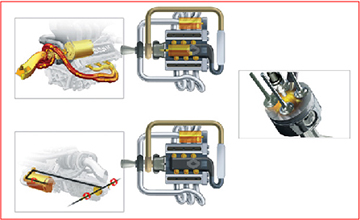
The new engine’s Energy Recovery System (ERS) uses the MGU-K and the MGU-H with an energy storage battery and some power and control electronics. Heat and kinetic energy recovered can be consumed immediately if required or used to charge the battery. The stored energy can be used to propel the car via the MGU-K or to accelerate the turbocharger via the MGU-H. Compared to the 2013 Kinetic Energy Recovery System (KERS), the ERS has twice the power (120kW as opposed to 60kW) for 33 seconds per lap. That is twice as much power for nearly five times longer than the previous system, and the performance effect is around 10 times greater. Drivers will be able to use five of each of the following: the engine (ICE), the Motor Generator Unit-Kinetic (MGU-K), the Motor Generator Unit-Heat (MGU-H), the energy store (ES), the turbocharger (TC) and the control electronics (CE). Each element can be rotated among units.
One gift the drivers have received from the rule-makers is that ERS will automatically be deployed by the engine, alleviating the need for the driver to activate it manually as was the case with the previous KERS. Another gift is rear brake control. Since harvesting so much energy under braking will have an effect on the rear wheels, an electronic rear brake control system will be allowed. This will be used to offset the ERS-K effect by aiding the braking effort at the rear and thus negating the need for the driver to constantly alter his braking.
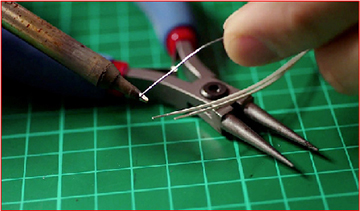
Fuel
To promote efficiency, these new engines will be governed by two different fuel restrictions: a maximum fuel-flow rate of 100 kg per hour and a maximum of 100 kg of fuel to be used from the time the race starts until the time the car crosses the line at the end of the race. That compares with a maximum fuel flow in 2013 in the region of 160-170 kg per hour. The engines will produce in the region of 600 bhp or more, revving to a maximum 15,000 rpm. Add on the additional power coming from electrical energy, and they will increase by 160 bhp. The cars will have similar power to their predecessors but with markedly enhanced fuel efficiency. Recovering this thermal and kinetic energy will not lead to an increase in the amount of fuel consumed. Teams will be trying to get the best balance of the fuel flow limit and fuel capacity for optimum performance throughout the Grand Prix. Any driver exceeding the 100 kg maximum will be excluded from the race results.
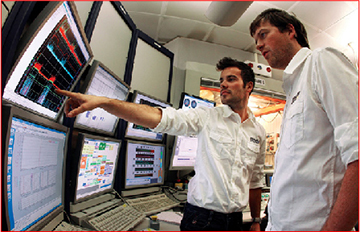
Gearbox
Teams can now decide prior to the 2014 season if the cars will use seven-speed gearboxes or eight forward ratios. Since 2011, drivers have had to use gearboxes for five races, but this year the number has risen to six. As previously, drivers who do not finish a race will be allowed to fit a new gearbox for the following race without penalty.
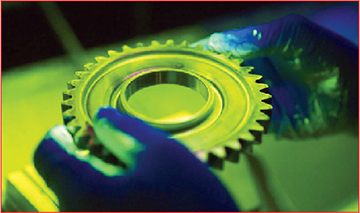
Chassis
Chassis design rule changes will affect four main areas: the nose and front wing, the rear wing, the cooling systems and the exhaust. The most striking aspects of the new cars will be a much lower nose as well as a narrower front wing. Cars are now required to have a significantly lower front nose with a maximum height of 185 mm (which was determined for safety reasons). Front wings have been reduced in width 75 mm per side. Previously the front wings were about the same width as the front tires, so the change will alter their effect on minimizing drag. To compensate, the wings’ endplates will be even more curved on the outside to spill air outside of the tires. Another change is that the rear wing main flap has been reduced in size, and cars can no longer include a lower beam wing. The lower beam wing had been used to link up the airflow in the diffuser and the upper rear wing.
Further back, the radiator inlets will be larger as a result of the greater cooling requirements. At the back, the exhaust-influenced aerodynamics, with the exhaust coming down the side pods that had defined technology for the last three years, have been virtually eliminated by rules, moving the exhaust position to higher up in the center of the car. These new rules require the use of single exhaust tailpipes that must extend at least 170 to 185 mm beyond the rear axle line. The exhaust outlet is now angled upward toward the rear wing instead of downward to face the rear diffuser.
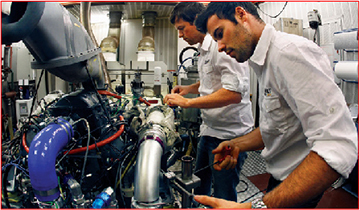
Double Points
There is a new, approved rule to award teams and drivers double points for the final race of the season. The last race of the season will have double drivers’ and constructors’ points in order to maximize focus on the championship until the end of the season. Controversial and still the subject of some discussion, this season will see double points awarded at the final race in Abu Dhabi. This is a bid to maintain interest in the Grand Prix should there be significant gaps in the Championship order in the closing stages instead of before the end of the season.
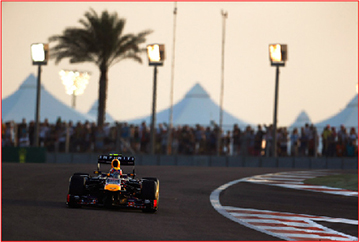
Driver Numbers
For the 2014 race season, team drivers were asked to choose their race number, between 2 and 99, for the duration of their careers in F1. Every car must carry its driver’s number. Under the new rules, drivers were invited to pick their choices. Sebastian Vettel exercised his right to use #1 for 2014 as reigning world champion but has chosen #5 for his lifetime number should he not win this year’s crown. Daniel Ricciardo has opted for #3. Previously driver numbers were allocated to teams on the basis of their positions in the previous year’s constructors’ championship. The team then decided which driver would carry which of its two numbers. The rule was introduced so that drivers could market their image with one number.
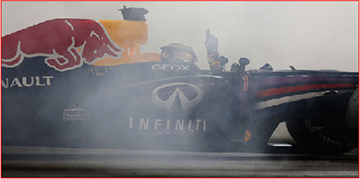
New Penalties
All drivers must have an FIA Super License to be able to compete in Formula One Racing. The only way to get one is to meet strict performance standards. The penalty system will be overhauled in 2014 so as to improve driving standards. Race stewards have been given the power to impose various penalties on a driver’s Super License if the driver commits an offense during a race or a practice session. Under the system, driving offenses will carry a pre-determined point value based on their severity. Stewards can also hand out five-second penalties for minor infringements. Any driver that earns 12 penalty points on his Super License during a 12-month period will be given a one-race ban.
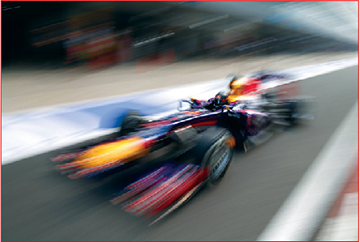
New Pole Position Trophy
In 2014, there will be a new Pole Position Trophy awarded to the driver who scores the most pole positions during the season. If there is a tie between drivers, the trophy will be awarded to the driver with the most second place finishes.
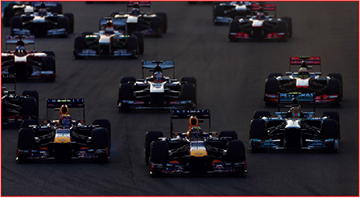
Ready for a New Era
“The regulations that govern car design are carefully laid out in millimeters by the sport’s governing body the FIA, whose main aim is to curb spending and speed and increase safety.” ~ Sebastian Vettel
“The power unit is tremendously complicated, and while road car manufacturers make some quite complicated hybrid cars, those cars have had the luxury of years of development before they come to the market. We’ve got three tests, around 12 days, and then we’re off to the first race. It’s a very compressed development schedule and that can bring a lot of problems, so reliability will be an issue. Equally, everyone will be finding their feet in terms of how to use the engines, how to cope with the fuel limits and the aero changes and how to make them work with the tires. We have harder tires this year to cope with the extra torque of the engines.” ~ Adrian Newey
The New RB10 is Revealed
Unveiled in pit lane on January 28th at the Jerez Circuit ahead of the first day of testing, the RB10 is powered by the Renault Energy F1-2014.
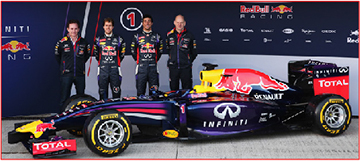
2014 FIA Formula One World Championship® Race Calendar
March 14 - 16 AUSTRALIA (Melbourne)
March 28 - 30 MALAYSIA (Kuala Lumpur)
April 4 - 6 BAHRAIN (Sakhir)
April 18 - 20 CHINA (Shanghai)
May 9 - 11 SPAIN (Catalunya)
May 22 - 25 MONACO (Monte Carlo)
June 6 - 8 CANADA (Montréal)
June 20 - 22 AUSTRIA (Spielberg)
July 4 - 6 GREAT BRITAIN (Silverstone)
July 18 - 20 GERMANY (Hockenheim)
July 25 - 27 HUNGARY (Budapest)
August 22 - 24 BELGIUM (Spa-Francorchamps)
September 5 - 7 ITALY (Monza)
September 19 - 21 SINGAPORE (Singapore)
October 3 - 5 JAPAN (Suzuka)
October 10 - 12 RUSSIA (Sochi)
October 31 – November 2 USA (Austin)
November 7 - 9 BRAZIL (São Paulo)
November 21 - 23 ABU DHABI (Yas Marina)